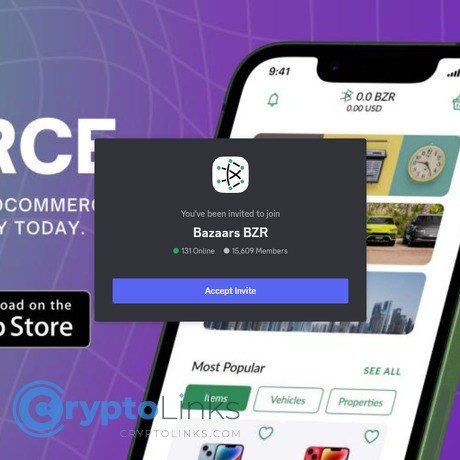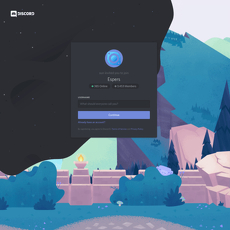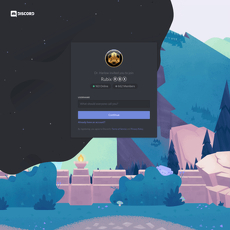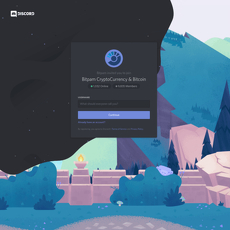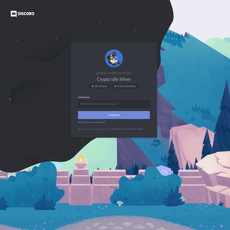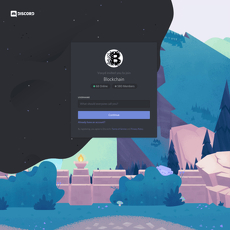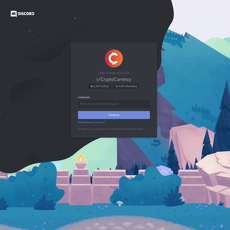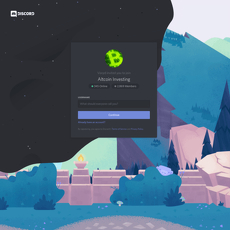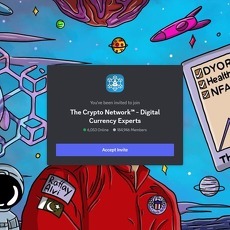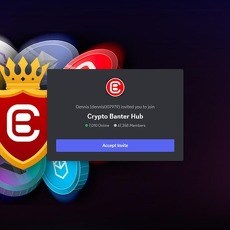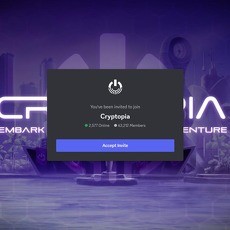Bazaars BZR Review
Bazaars BZR
discordapp.com
Bazaars BZR Discord Review Guide: Everything You Need to Know + Safety Checklist
Wondering if the Bazaars BZR Discord is worth your time—or just another noisy server with hidden traps?
I’ve spent a lot of time inside crypto Discords. Some are goldmines for real updates and helpful people. Others are minefields of fake “support” DMs, scam links, and hype that goes nowhere. This guide is your shortcut: what to expect, how to join safely, and how to avoid the usual Discord mess so you can focus on what actually matters.
What usually goes wrong (and why people bail fast)
Most newcomers fall into the same pain points:
- Too many channels, not enough clarity: Announcements buried under memes and general chat. You miss real updates because they get pushed up in minutes.
- Fake invites and DM “support” traps: Bad actors clone servers or pretend to be moderators. One wrong click and you’re on a wallet-drainer site. Security firms have repeatedly flagged Discord and Telegram as top targets for social engineering in web3.
- Unclear token info: What’s BZR for? How does it fit the product? Without a quick, credible overview, it’s just noise.
- Hype over substance: Flashy announcements with no follow-through. It’s easy to get swept up and forget to check the basics.
I’ve seen the same patterns across NFT drops, DeFi tools, and new tokens. Attackers lean on urgency and authority—“Verify now,” “Claim your airdrop,” “Moderator here, your wallet is at risk.” It’s classic social engineering.
Simple rule: if it comes by DM, treat it as a scam until proven otherwise.
Here’s what you’ll get from this guide
I’m keeping it practical and focused. I’ll walk you through:
- How to verify the official Bazaars BZR server and links (so you don’t join a fake one)
- What the community actually offers vs. what’s just talk
- How BZR might fit into your workflow (or if it’s not a match)
- Green flags vs. red flags to watch from day one
Think of it as a filter you can reuse on any crypto Discord—not just Bazaars.
Who should read this
- Curious users who keep hearing about Bazaars and want a clean way to check it out
- Token explorers who want to understand where BZR fits without drowning in chatter
- Builders and power users who care about updates, dev notes, and real progress
- Security-first folks who want to avoid the usual Discord hazards
A quick note on safety and expectations
No shilling. No financial advice. I call out what’s clear, what’s missing, and what you should double-check yourself. I always put security first because the cost of a single bad click can be brutal.
- Use official links only: Start from the project’s verified channels. Here’s the invite again: Bazaars BZR Discord.
- Disable DMs from server members: Most scams arrive via DM. Kill the channel entirely.
- Never “verify” by connecting a wallet: Real servers don’t need your wallet to verify your humanity.
- Check announcements before clicking anything: If a link or update isn’t echoed in the official announcements channel, assume it’s fake.
Here’s the good news: with a few habits, Discord becomes useful again. You can mute noise, track real updates, and skip the drama entirely.
Ready to cut through the fog? In the next section, I’ll explain what Bazaars actually is and where BZR fits—so you’re not guessing what you’re signing up for. Curious about what’s live today versus what’s still promised?
What is Bazaars and where does BZR fit?
If you strip the buzzwords, Bazaars presents itself as a crypto-first marketplace: a place to buy, sell, or offer services with settlement in digital assets, built around lower fees, fewer middlemen, and a trust layer that doesn’t vanish when you move across borders.
“Trust is built in drops and lost in buckets.”
That’s why people gather in the Discord: to see what’s shipping, get direct updates from the team, compare experiences with other users, and figure out where the BZR token actually matters in practice.
Quick background
The pitch is simple: Web2 marketplaces take big cuts, gatekeep who can sell, and rely on chargebacks and centralized support when deals go sideways. Bazaars claims to build a mobile-first, crypto-powered alternative where:
- Payments are peer-to-peer with on-chain settlement.
- Fees are designed to be lower and more transparent.
- Reputation and dispute handling aim to be structured, not vibes.
In other words, they’re tackling the classic P2P marketplace trust problem with crypto rails and a token that, according to public materials, underpins fees, access, and incentives. There’s real-world logic behind this approach: research on online marketplaces consistently shows that reputation systems and escrow-like protections reduce perceived risk and boost transaction completion rates (see, for example, Michael Luca’s work on reputation and revenue).
Whether Bazaars achieves that is all about execution—what’s live today, what’s in testing, and how BZR is actually used beyond a whitepaper claim.
BZR in plain English
Here’s how BZR is positioned to fit into the ecosystem. Treat these as roles you should verify in the docs and in the product, because not every feature may be live on day one:
- Payments and fees: Using BZR to pay marketplace fees or to get lower rates compared with paying in other assets.
- Access and boosts: Token-gated perks such as priority listing placement, seller tools, or higher daily posting limits to reduce spam.
- Reputation staking: Sellers (or service providers) might stake BZR as a “bond” to signal skin in the game. Think of it like locking a deposit to back your promises—useful if there’s a dispute process. You should confirm if any slashing/penalties exist and how they’re triggered.
- Governance: Community voting on fee parameters, feature priorities, or treasury usage, if governance is enabled.
- Rewards: Potential incentives for early users, market makers, or trusted mediators—if the system uses human or on-chain arbitration at all.
None of this means “number go up”—it means the token is supposed to grease the gears of the marketplace. Your litmus test: can you point to a specific screen, flow, or doc page where BZR is required or meaningfully discounted? If yes, that’s real utility. If it’s hand-wavy, keep your guard up.
Core features and ecosystem pieces
Here’s what the team typically points to, and how I sanity-check what’s live versus what’s promised:
- Mobile marketplace app: iOS/Android listings, chat, and checkout. I look for real app store pages linked from the official site, visible version history, and recent release notes.
- Crypto payments: Non-custodial wallet or wallet connect, with settlement in supported assets. I check whether the app supports a native wallet, WalletConnect, or specific chains—and whether fees and slippage are explained in-app.
- Escrow/dispute flow: Smart-contract escrow or moderated holds. I look for clear UX during checkout that shows what triggers release, how disputes work, and expected timelines.
- Seller tools: QR/invoice payments, listing boosts, analytics. Useful if BZR ties into boosts or lower fees.
- Reputation layer: Ratings, on-chain attestations, or proofs tied to profiles. I check whether ratings are sybil-resistant or just star emojis.
- Integrations: Common examples are WalletConnect, price oracles, or fiat on/off-ramps. The docs should name names—vague “integrations coming soon” doesn’t cut it.
Practical sample flow to imagine (and verify): a seller lists a used phone, a buyer pays in a supported asset, funds are held in escrow, the item ships, and escrow releases on delivery confirmation or after a dispute window. If BZR unlocks lower fees or faster resolution, you should see those terms clearly during checkout.
What’s live should be evidenced by:
- A public changelog or announcements showing recent releases.
- Contracts you can view on a block explorer with verified code.
- App store listings with consistent branding and developer info that matches the official site.
Where to find official links
Phishing is a cottage industry in crypto. Use this checklist to source the only links you trust:
- Website: Start from the project’s official site linked in their X/Twitter bio. Cross-check that the same domain appears in docs and announcements.
- X/Twitter: The handle should link to the website and the official Discord. Be wary of handles with extra underscores or numbers.
- Docs: Look for a docs subdomain (e.g., docs.[projectdomain]) linked from the website footer. Contract addresses and how BZR is used should be spelled out there.
- Smart contracts: Only copy addresses from the docs or the announcements channel. Verify on the relevant block explorer: look for a verified contract, socials section pointing back to the official site, and a sane transaction history.
- GitHub: Access it via a link on the website or docs—not from random bios. Healthy repos have recent commits and meaningful code, not empty shells.
- App stores: If there’s a mobile app, follow links from the official website to Apple’s App Store and Google Play. Check developer name, app screenshots, and update cadence.
Quick anti-phishing habits I use every time:
- Type domains manually or use bookmarks; never rely on search ads for crypto terms.
- Inspect the URL: “discord.gg/...” should resolve to “discord.com/...” in the app—not “disc0rd” lookalikes.
- When in doubt, check the pinned tweet and the announcements channel for canonical links.
I know the mission sounds promising—but does the Discord actually help you cut through the noise and get the real stuff fast? Next, I’ll show you how I verify the invite, which channels matter, and how to set it up so you only see signal. Ready to make those first 10 minutes count?
Inside the Bazaars BZR Discord: first impressions and setup
Here’s the walkthrough I’d want if I were joining fresh. The goal is simple: get into the official Bazaars BZR Discord quickly, lock down your settings, and only focus on the channels that actually move the needle.
“Scammers don’t need your seed phrase if they can rent your attention for 10 seconds.”
Start with the official invite: discord.gg/bazaars-bzr-979586323688087552. Do not grab it from a random thread or reply. Open it from a link on the project’s website or pinned post on X so you know it’s legit.
- Accept the invite and expect a rules/verification step. If there’s no basic gate (rules + bot check), be extra cautious.
- Turn off DMs from server members before you say hello: User Settings → Privacy & Safety → toggle off “Allow direct messages from server members.”
- Mute noise early. Right-click channels that are pure chat and hit Mute. Keep your attention for announcements, dev updates, and help channels.
Is Discord safe? The real answer
Discord is fine. It’s the social engineering you need to outsmart. Attackers love crypto servers because people are primed to click links fast. This isn’t guesswork—public data backs it up:
- FBI IC3 2023 logged record cybercrime losses, with investment fraud (often using crypto lures) surging. Source: ic3.gov
- ScamSniffer 2023 report tracked hundreds of millions drained via phishing, often distributed across social platforms like Discord and X. Source: scamsniffer.io
Bottom line: the platform isn’t the problem. Random DMs, fake “support,” and rushed clicks are. Stick to official channels and you’ll sidestep most traps.
Joining safely and verifying the invite
Here’s how I sanity-check that the invite and server are the real thing:
- Cross-check the link: Open the Discord invite from the project’s official website or the pinned post on their official X/Twitter. Never the other way around.
- Confirm the server identity: After you join, look at the top-left server name and icon. Click the server name → “Server Profile” (or About) if available. You want a clear description and consistent branding.
- Scan the banner and welcome channels: A legit setup usually has a welcome/rules channel, a verification step (Captcha or role), and a clearly labeled announcements channel near the top.
- Check the mod list: Open the member list (right sidebar). The top roles (Team/Admin/Mod) should be few, consistent, and frequently active in key channels.
- Validate announcements: In the announcements channel, open the pinned messages and recent posts. Links should match the project’s official domain and socials.
Extra trick: click the three dots on an announcement → Copy Message Link. If a “team” account posts news that you can’t find mirrored on the project’s website or X, treat it as unconfirmed.
Channels that matter
Save your time by focusing on the high-signal rooms. You can always unmute later if they earn it.
- #announcements: Follow this first. Hit the bell icon and set notifications to “Only @everyone & @here” or “All Messages” if you want full coverage.
- #dev-updates (or similar): Shipping beats talking. Look for commit notes, version bumps, or previews of features. Lack of specifics is a useful signal too.
- #how-to / #start-here: Good projects front-load guides for wallets, contract addresses, and app access. If this channel is sloppy, expect friction elsewhere.
- #support: Drop a simple question and measure the response (more on that next). Also read the pins here—most “issues” are solved in one or two pinned threads.
Find critical info fast using search/pins:
- Open search and try:
- in:#announcements “contract” (helps locate official addresses and audits)
- in:#dev-updates has:link (zero in on shipped items)
- from:@TeamMember (filter to posts from specific team accounts)
- Click the “pins” icon in important channels and read from oldest to newest. Most legit answers live there.
- Cross-check any link in pins with the website/X. Consistency matters.
Moderator quality and response time
You can learn a lot in 10 minutes:
- Speed test: Ask a concise question in #support (e.g., “Where is the latest contract address listed on the site?”). Time the first helpful reply.
- Signal vs. hand-waving: Helpful mods share links, docs, or exact steps. Hype and vague reassurances are a red flag.
- Scam hygiene: Healthy servers post frequent reminders not to accept DMs from “support,” and they ban/address spammers quickly.
- Rules actually enforced: If mods let fake airdrops sit for hours, that tells you everything.
I also look at the tone. Calm, consistent moderators create a safer space than loud ones who only show up during mint/IDO/airdrop hype windows.
Common Discord scam patterns to avoid
Here are the ones I see repeatedly across crypto servers, with simple counters you can adopt today:
- “Support” DMs: A fake mod messages you first. Fix: never talk wallet details in DMs. Real support keeps help inside public channels.
- Fake airdrop/migration links: “Claim now” sites that ask for wallet connection/signature. Fix: only connect on the official domain; verify the link in announcements and on the website/X.
- Punycode domains: Lookalike URLs (bazаars.com with a Cyrillic “a”). Fix: copy the link, paste in a plain text editor, and inspect every character; bookmark the real domain once.
- QR-code drainers: “Scan to fix error” tricks. Fix: never scan a QR from Discord for wallet actions.
- Google Docs/Drive baits: Files that lead to malware or phishing sites. Fix: if it isn’t linked on the official site, skip it.
- Compromised webhooks: Sudden “urgent” announcements with odd grammar or off-brand styling. Fix: check the same news on the website or X before acting.
Essential habits that cut your risk dramatically:
- Use a hardware wallet for value and a burner wallet for experimentation.
- Keep DMs from server members off; whitelist nothing by default.
- Review and revoke token approvals regularly (e.g., revoke.cash).
- Never rush. If a deal expires in minutes, assume it’s bait.
If you’ve got the server set up, the next smart move is understanding the token itself. Want a simple checklist to confirm supply, contracts, utility, and roadmap—without getting lost in jargon?
Token basics checklist: what to confirm about BZR
If you want clarity instead of confusion, treat BZR like a product you’re QA‑testing. No FOMO, no guessing—just quick, repeatable checks. When I review tokens, I aim to answer one question: does the design support real usage and protect holders from obvious risks?
“Trust the math, not the marketing.”
Supply and distribution
First, pressure-test the supply story. Scarcity and fairness matter only if they’re verifiable.
- Confirm total and max supply:
- Match the number across the official docs, the announcements channel, and the block explorer’s token page (e.g., Etherscan, BscScan).
- Look for mint functions in “Read/Write Contract.” If minting exists, is it time-locked or governed by a multi-sig?
- Check emissions and unlocks:
- Use TokenUnlocks or the project’s vesting dashboard. Map upcoming unlocks on your calendar.
- Understand who unlocks what: team, investors, ecosystem, or treasury. A “when” without a “who” isn’t enough.
- Holder concentration:
- Open the “Holders” tab on the explorer. If top 10 (excluding CEX/LP/vesting contracts) control a huge chunk, expect higher volatility.
- Watch labeled wallets (team/treasury) for patterns. Steady unlocks with communication are fine; surprise transfers are not.
- Industry reports (e.g., Chainalysis, Messari) have long noted how concentrated ownership can amplify drawdowns during stress—keep that in mind when you gauge risk.
- Initial allocations:
- Look for a clean pie chart in docs: public sale, liquidity, team, investors, ecosystem, community rewards.
- Best practice: team and investor tokens should vest with transparent schedules and on-chain contracts you can click into.
Liquidity and contracts
Good projects get rugged by sloppy liquidity. Bad projects use liquidity as a trap. Verify before you touch anything.
- Verify the contract address:
- Only use links from official website/X/docs or the server’s announcements. Bookmark it.
- Check for impostor contracts on explorers. The real one usually has the most liquidity and verified code.
- Is the contract upgradeable?
- On EVM, explorers flag proxies (“This contract is a proxy”). If upgradeable, who controls upgrades? A reputable multi-sig like Safe is standard.
- If ownership is renounced, confirm that critical parameters (fees/blacklists/maxTx) can’t be changed later.
- LP health and locks:
- Open the main DEX pair on DexScreener or DEXTools. Check liquidity size, age of pair, and volume consistency.
- Confirm LP tokens are locked on platforms like Unicrypt or Team Finance. Look for lock duration and wallet owner.
- Open the LP token’s “Holders.” A big chunk sitting in a private wallet is a red flag.
- Security scan and edge cases:
- Run quick checks with Token Sniffer and GoPlus Security (automated tools aren’t gospel, but they catch obvious hazards).
- Look for dangerous functions: unlimited mint, blacklist/whitelist trading, adjustable tax, max wallet/tx limits that can be weaponized.
- Test buys/sells in a small size first to confirm slippage and taxes behave as declared. Honeypot tests (e.g., Honeypot.is for EVM) help spot blocked sells.
- Audits and change control:
- If there’s an audit, read the findings and remediation status. Who audited it? Are commits since audit material?
- Change logs matter: any parameter updates should be announced and traceable on-chain.
Utility and demand drivers
Speculation fades. Utility sticks. Ask, “Why would real users need BZR next month, not just next bull run?”
- Real integrations:
- Is BZR required or meaningfully rewarded inside the Bazaars app? Payments, fee discounts, listing boosts, or access perks are strong signals.
- Can partners, creators, or merchants actually use BZR today? Screenshots and video walkthroughs > promises.
- Value loop design:
- Good tokens create loops: spend/earn/repeat. Examples: pay fees in BZR, get discounts; hold to unlock tools; stake to secure something productive.
- Beware “staking” with no clear yield source. If rewards come only from emissions, that’s temporary demand, not sticky demand.
- On-chain and product KPIs:
- Watch daily active users, transactions involving BZR, and recurring activity. Tools: explorer analytics, Nansen, DeFiLlama (if relevant).
- Track holder growth quality: more unique wallets using the app > airdrop farmers parking dust.
- Supply sinks and sustainability:
- Are there credible burns, lockups, or fee-based sinks tied to real usage?
- Do incentives shrink over time as organic demand grows? That transition is key for long-term health.
Roadmap and transparency signals
Tokens live or die by execution. I look for teams that ship, document, and show their work.
- Roadmap with receipts:
- Clear milestones with dates, dependencies, and public status (Notion/Trello is fine). Missed deadlines happen—silence shouldn’t.
- Release notes and changelogs for app updates. If it’s shipped, it should be documented.
- Public documentation:
- Tokenomics PDF or docs site that matches on-chain reality. If they say “no tax,” the contract should agree.
- Transparent unlock calendar with addresses you can click and verify.
- On-chain governance and treasury:
- Is the treasury in a known multi-sig? You should see signers, thresholds, and transactions on Safe.
- Proposals and voting—if governance is promised—should be discoverable and auditable.
- Communication consistency:
- Announcements that match GitHub commits, app releases, and explorer events. Hype that isn’t backed by links is just noise.
- Third-party validation helps: audits, partner confirmations, and independent dashboards add credibility.
If you had to pick just three quick checks tonight, I’d go with: verified contract and LP lock, upcoming unlocks with who/when/where, and proof of in‑app utility that people actually use. Want a simple system to separate signal from noise across any crypto community in under five minutes? That’s exactly where we’re heading next.
How I evaluate crypto communities (and how you can too)
When I look at any crypto community, I use a simple, repeatable playbook that filters hype fast and surfaces real progress. It’s part data, part street-smarts, and it works whether you’re checking a fresh token or a long-running project.
“If it’s not on-chain or in a changelog, it didn’t ship.”
Signal vs. noise
I do a 10-minute audit that tells me if a server is worth my attention. No fancy tools—just focus and a notebook.
- 30-day message scan: Open #announcements and #dev-updates. Count posts by type:
- Product changes (releases, versions, features)
- Docs/How-to guides
- Partnerships (with proof, see below)
- Community/admin notices
- Giveaways/memes/price talk
Aim for a signal ratio where at least half of the posts are product/docs/verified partnerships. If it’s mostly giveaways or price screenshots, that’s noise. A well-run community beats hype with consistent, boring progress.
- Pins are your truth layer: Check pinned messages. Are there up-to-date setup guides, key links, risks/limitations, and timelines? If pins are outdated, the ops are probably sloppy elsewhere too.
- Time-stamped progress: Look for version numbers, dates, and links to release notes or commits. A public changelog is a green flag.
- Response quality over speed: Skim support threads. Are answers specific and linked to docs, or just “DM me”? Quality answers beat quick but vague ones.
Why this matters: research from MIT (Science, 2018) found false news spreads faster than the truth largely because it’s more novel and emotional. That applies here—buzz spreads; proof sleeps. Your job is to chase proof, not buzz. Source: Science (MIT study).
Team, partners, and documentation
Good communities have leaders who show their work, partners who vouch publicly, and docs that teach you to fish.
- Team presence test: Names and roles should match across X/LinkedIn and the server. Real teams leave a trail: AMAs with replays, dev logs, PRs tied to commits. Anonymous is fine; anonymous plus silence is not.
- Partnership reality check: Run the “press release vs. integration” test:
- Is there a co-announcement from the partner’s official channel?
- Is there on-chain proof (contract interaction, LP, or multisig signature) you can verify?
- Do the docs reference endpoints, contract addresses, or SDK changes that enable the partnership?
If it’s a single tweet and zero artifacts, assume marketing, not traction.
- Docs smell test: Can a new user complete a task in under 10 minutes using only the docs? Look for last-updated timestamps, versioned pages, and clear risk disclosures. “Coming soon” everywhere is a red flag.
- Audits and bug bounties: Ask for the actual PDF with scope and commit hash, not just a logo wall. Bonus points for live bounties on Immunefi and public disclosure policies.
On-chain reality check
This is where the stories meet the ledger. Five quick checks save you months of regret.
- Confirm the contract: Only use addresses from the official website/docs. Then verify on a block explorer like Etherscan (or the chain’s equivalent). Look for verified source code and proxy patterns.
- Holder concentration: Inspect top holders. As a rough rule, if the top 10 non-exchange wallets control a huge chunk without clear vesting, that’s risk. Healthy projects often use vesting contracts you can see on-chain.
- Liquidity health: Check LP size and lock duration on tools like GeckoTerminal or DEX dashboards. Is liquidity locked via reputable lockers (e.g., Team Finance/Unicrypt), and for how long? Thin or unlockable liquidity invites volatility and rug risk.
- Upgradability vs. safety: If contracts are upgradable, who controls the admin keys? A well-configured multisig with known signers is sane; a single EOA is not. If ownership is renounced, understand you trade flexibility for safety.
- Whale behavior: Add top wallets to a watchlist on Etherscan or tools like Nansen/DeBank. You want to see distribution widening over time, not consolidating into a few hands.
Data point for context: Chainalysis estimates crypto crime regularly hits billions yearly, with scams and rug pulls a persistent share. Eyeballs aren’t enough—you need receipts. Source: Chainalysis Crypto Crime Reports.
Security best practices
Most losses come from simple mistakes. I stick to a few non-negotiables.
- Wallet hygiene:
- Use a hardware wallet for anything you can’t afford to lose. Disable blind signing.
- Keep a separate “burner” wallet for testing new dApps/links.
- Review and revoke token approvals monthly via revoke.cash or approved.zone.
- Link discipline:
- Bookmark official domains. Never click “support” DMs—they’re almost always scams.
- Use transaction simulation (many wallets have this; also Tenderly) to preview effects before you sign.
- Discord settings that save you:
- Disable DMs from server members.
- Turn on 2FA and use a unique email/password for Discord.
- Install anti-phishing extensions like Wallet Guard or Stelo. They’re not perfect, but they catch common tricks.
- Urgency is the attacker’s weapon: If a message makes you feel rushed or special (“you’ve been selected!”), step back. Real opportunities can wait 10 minutes while you verify.
Underneath the charts and memes is a simple truth: good projects stay boringly consistent. They post real updates, keep docs clean, and let on-chain data do the talking.
So here’s the question you probably care about: using this exact framework, where does Bazaars BZR shine—and where does it come up short? Keep reading, because I’m about to score it, call out the standouts, and flag the gaps next.
Pros, cons, and my early verdict on Bazaars BZR
Where Bazaars BZR stands out
If you care about signal over chaos, Bazaars BZR’s Discord can be a solid place to keep tabs on progress without getting pulled into pointless hype. Here’s what I liked most while checking it out:
- Clear update flow: A steady announcements stream and tidy pins make it easier to catch the latest without scrolling for ages. Weekly or sprint-style recaps are a big win if they keep those going.
- Active mod presence: Fast cleanup of spam and a strict “no DMs” culture are green flags. Chainalysis has shown social engineering stays the top scam vector in crypto communities, so visible moderation isn’t optional—it’s table stakes.
- Builder-friendly structure: Dedicated channels for dev updates, support, and FAQs cut down on repetitive questions and speed up onboarding for newcomers.
- Roadmap focus (when done right): Consistent, bite-sized progress updates beat vague promises. Electric Capital’s annual developer reports have repeatedly shown that real shipping activity is a better indicator of longevity than social chatter.
- Link hygiene: Official links in one place (banner, pinned posts, and topic lines) reduce misclicks—critical for keeping users away from fake airdrops and wallet drainers.
Green flags I watch for: visible mod actions, link consistency, update cadence, and lightweight “what’s new” summaries. If you’re seeing those, you’re in a healthier server than most.
Potential drawbacks or gaps
No community is perfect. A few things I’d keep an eye on before committing serious time or attention:
- Token utility clarity: If the BZR token’s day-to-day role (payments, fees, access, or governance) isn’t explained in one simple, current page, expect confusion and repeated questions.
- Docs spread across channels: When documentation lives in scattered Discord threads, it gets stale fast. A single, versioned source of truth (docs site or GitHub) beats screenshots every time.
- Roadmap vs. reality: High-level timelines aren’t enough. The strongest projects pair public targets with issue trackers or changelogs. Without that, it’s hard to separate shipping from storytelling.
- Support latency during peaks: Crypto servers often slow down during listings, AMAs, or price volatility. If answers lag or get buried, newcomers bounce and miss critical info.
- Audit and contract visibility: If audits, contract addresses, and liquidity details aren’t easy to find in one pinned post, users will get them from randoms—which is how scams start.
Who should consider joining
Not every Discord fits every user. Here’s who will likely get the most value from the Bazaars BZR server right now:
- Curious builders and tinkerers: If you like tracking real product progress and reading dev updates, this is your lane.
- Early supporters who value context: People who want updates straight from the source, not secondhand on X, will appreciate the structured announcements.
- Security-first lurkers: If you prefer read-only mode and following verified links, the layout makes it easier to stay safe while staying informed.
- Community ops folks: If you run your own server, there are good ideas here—like clean pin hygiene, clear channel naming, and “start-here” funnels that actually onboard.
Early verdict: If you want structured updates and a manageable signal-to-noise ratio while you evaluate BZR’s real utility, joining the official Bazaars BZR Discord is a reasonable move in read-only mode. The big question is simple: will the team keep connecting roadmap claims to public, verifiable progress? That’s what separates a “busy” server from a useful one.
Wondering how to check legitimacy and stay safe while you explore—without getting tripped up by fake links or DMs? That’s exactly what comes next.
Bazaars BZR FAQ and next steps
Is Bazaars BZR legit?
I don’t rely on vibes. I rely on receipts. Here’s how I check legitimacy in under 15 minutes:
- Confirm official links: Start from the project’s verified web domain and X/Twitter bio. Use those links to reach the only Discord, docs, and contract pages.
- Cross-check the contract address: Find the address from official channels only (website/docs/announcements). Paste it into a block explorer and confirm:
- It matches the same address shown across the site, docs, and pinned posts.
- There’s healthy liquidity and no obvious funny business (suspicious minting, single whale with extreme control, or unlimited mint functions).
- Look for real product progress: Is there a live app, testnet, or at least public demos and frequent changelogs? Are commits visible on GitHub? Are feature releases announced with specifics (version numbers, dates, screenshots)? Patterns > promises.
- Check transparency signals: Do they publish roadmaps, team info, or audits? Independent code reviews and clear docs are strong green flags. Lack of clarity isn’t an instant red flag, but it raises the bar for everything else.
- Sanity-check with third-party data: Security firms consistently show that social engineering—not smart contracts—is the top threat surface. See ongoing research from Chainalysis and CertiK. Translation: trust the process, not random DMs.
If the links line up, the contract is consistent across sources, and there’s visible progress with clear comms, I give it a provisional green light to keep watching.
Should I trust Discord?
Discord is fine. The risk is people abusing it. I treat Discord like a crowded airport—great if you stick to the official gates, dangerous if you follow a stranger into a side corridor.
- Use official invites only: Join via the website or X/Twitter bio.
- Disable DMs from server members: On desktop, open the server > click the server name > Privacy Settings > toggle off “Allow direct messages from server members.” Also check User Settings > Privacy & Safety.
- Set smart notifications: Right-click the server > Notification Settings > mute noisy channels, allow only announcements or role pings you actually want.
- Trust announcements, not DMs: If a “mod” DMs you, assume it’s fake. Real support lives in public channels. Confirm every link in announcements before clicking.
- Use a burner wallet for experiments: If you’re testing a new feature, use a fresh wallet with small funds. Review approvals frequently and revoke anything you don’t recognize.
Quick reality check: Studies from Chainalysis and other security researchers keep finding that social channels (Discord/Telegram) are frequent phishing vectors. Strong settings + link discipline beat 99% of scams.
Final thoughts and what I’d do next
Here’s the simple, low-stress path I follow:
- Step 1: Join the official server: Bazaars BZR Discord.
- Step 2: Immediately disable DMs from server members and mute everything except announcements, dev-updates, and support/how-to.
- Step 3: Grab the contract address from an official source only. Bookmark it in your block explorer.
- Step 4: Watch for one week. Are there concrete updates with timestamps, version numbers, screenshots, or code pushes? Do questions in support get real answers?
- Step 5: If you test anything, use a separate wallet and minimal funds. Verify every transaction, read approvals, and revoke after use.
- Step 6: Reassess after seven days. If the team ships and the comms are clear, keep it on your radar. If it’s all hype and thin details, step back—no sunk-cost thinking.
- Step 7: Keep your notes. A short log of updates, links, and decisions turns you from guessing to evaluating.
Bottom line: play it methodical. Verify links, watch the build, and protect your wallet. If the signal stays strong, you’ll know exactly why you’re sticking around—without the drama.
CryptoLinks.com does not endorse, promote, or associate with Discord servers that offer or imply unrealistic returns through potentially unethical practices. Our mission remains to guide the community toward safe, informed, and ethical participation in the cryptocurrency space. We urge our readers and the wider crypto community to remain vigilant, to conduct thorough research, and to always consider the broader implications of their investment choices.

